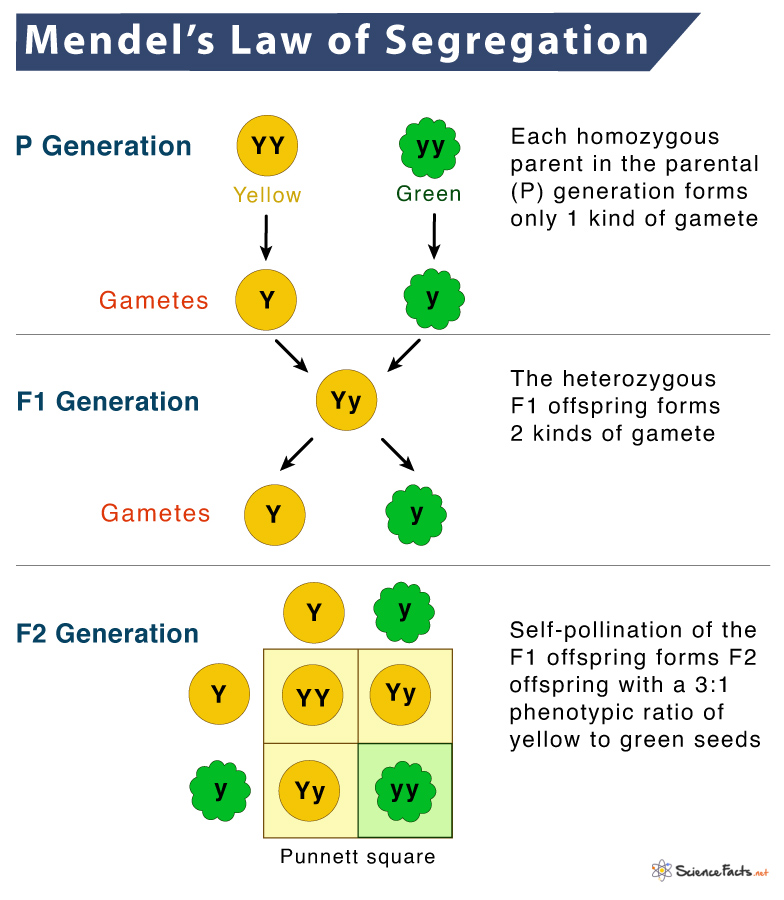From this result, Mendel put forward three laws of inheritance that could define the pattern of inheritance not only in pea plants but also in other organisms. They are the Law of Dominance, Law of Segregation, and Law of Independent Assortment. Here, we will study the Law of Segregation in detail. The segregation law is also known as Mendel’s First Law of Genetics.
Law of Segregation
Basis of Segregation
Law of Segregation Example
Conclusion
When an egg and a sperm cell unite during fertilization, they form a new individual whose genotype consists of alleles in the gametes.
A gene can have more than one form or alleleOffspring inherit two alleles for each trait or characterWhen gametes are produced, allele pairs separate, leaving each cell with a single allele for each traitWhen the two allele pairs are different, one is dominant, and the other is recessive
Let us consider Mendel’s experiment with pea plants to reach his conclusion. As we know from Mendel’s monohybrid and dihybrid cross, when the alleles of a pair are different (heterozygous), the dominant trait is expressed, while the recessive trait is masked. The steps of the experiment are: In a Punnett square, all possible gametes from the two parents are arranged, one on the top, the other on the side. After self-fertilization, the same plant is both the parents. All the combinations are then written in the boxes, representing fertilization for making new individuals. By studying the genotype and phenotype of the F2 offspring, Mendel found that seeds with the genotype of YY or Yy are yellow. In contrast, seeds with genotype yy are green. Ans. The scenario that breaks the law of segregation is when a gamete produced has two identical alleles after the second round of meiosis.
